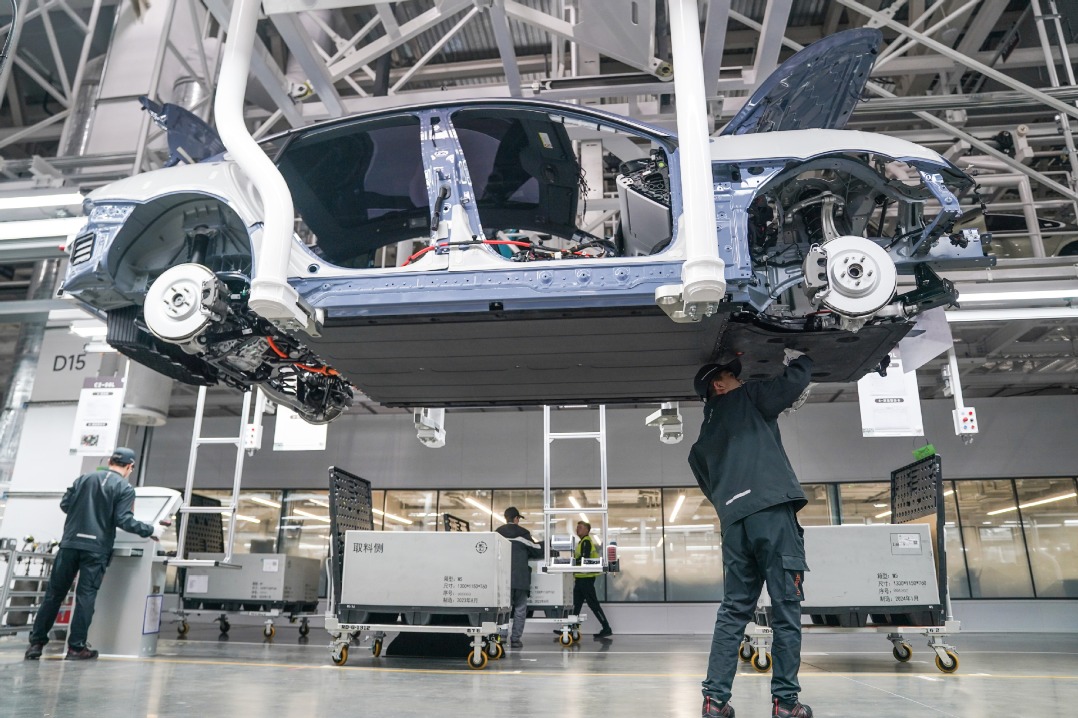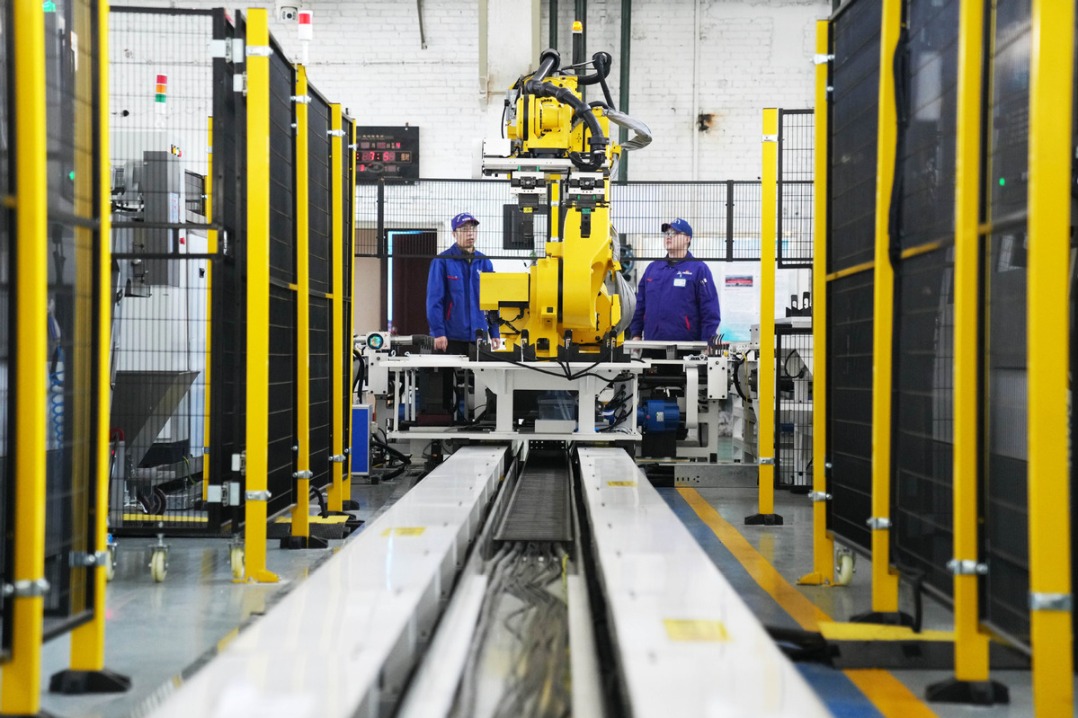Five things you need to know about Beijing-Tianjin-Hebei integrated development

I. The development outline
On 30th April 2015, the Outline Plan of Beijing-Tianjin-Hebei Integrated Development, approved by the Political Bureau of the Central Committee of the Communist Party of China, provides for a spatial layout featuring "one core, two cities, three axes, four areas and multiple nodes" for the coordinated development of the three areas.
The ultimate goal is to move noncapital functions away from downtown Beijing, which will aid efforts to control population growth.
The outline, released by the Beijing-Tianjin-Hebei Integrated Development Office, also clarifies the functions of four strategic areas: the Caofeidian Integrated Development Zone in Hebei, the Beijing New Airport Economic Zone, Tianjin Binhai New Area and the Zhangjiakou-Chengde Ecological Area, also in Hebei.
II. Basic file
The broad region covers Beijing, Tianjin and eigh prefectural cities in neighboring Hebei Province (Shijiazhuang, Tangshan, Cangzhou, Baoding, Qinhuangdao, Langfang, Chengde, Zhangjiakou, Xingtai and Handan).
It is positioned as a world-class city cluster with Beijing as its core and aims to lead the coordinated development and reform of the region, and serve as a new engine of innovation-driven economy and a demonstration zone for ecological conservation in China.
III. Development pattern
The region features a layout of "one core, two cities, three axes, four areas and multiple nodes", which is expected to help phase out Beijing's non-capital functions.
One core refers to the city of Beijing. Removing the non-capital functions of Beijing, optimizing the core functions of the capital city and addressing urban problems is the priority of the Beijing-Tianjin-Hebei Coordinated Development Plan.
Two cities refer to Beijing and Tianjin, the main engines for the Beijing-Tianjin-Hebei Coordinated Development. Efforts will be made to strengthen coordination between Beijing and Tianjin, expand the breadth and depth of cooperation in an all-round way, and speed up integrated development of the two cities so they jointly play a leading role in the plan.
Three axes refers to three industrial development belts and urban agglomeration axes -- Beijing-Tianjin, Beijing-Baoding-Shijiazhuang, and Beijing-Tangshan-Qinhuangdao. They serve as the main structure supporting the Beijing-Tianjin-Hebei Coordinated Development.
Four areas -the core functional zone in the center, the coast development zone in the east, the function exploration zone in the south and the ecological conservation zone in the south -- refers to clearly designated locations each with their own development goals.
Multiple nodes are Shijiazhuang, Tangshan, Baoding, Handan, Zhangjiakou, Chengde, Langfang, Qinhuangdao, Cangzhou, Xingtai, and Hengshui. They focus on improving the services and promoting the agglomeration of population and industries.
IV. Objectives of Beijing-Tianjin-Hebei coordinated development
a. Release the burden of Beijing
The key to the solution of Beijing's metropolitan mire is to moderately weaken its economic functions. In the future, Beijing's low-end industries are likely to be transferred to Hebei province. For example, Beijing's wholesale market will be transferred to peripheral areas. In this way, the transient population in Beijing will be cut and social security will improve.
b. Render Tianjin more industrial projects
Since industrial chain planning involves local taxation benefits, it becomes important to plan financial taxation revenue in a reasonable way. In this sphere, Beijing is expected to sacrifice part of its interests so that Hebei can gain comparatively more benefits and Tianjin can win more industrial projects.
c. Help Hebei shackle off poverty rapidly
Beijing is prosperous, Tianjin is moderately well-off and Hebei is relatively backward. Growth in emerging cities such as Tangshan relies on steel, resulting in capacity excess and environmental pollution.
The launch of the Beijing-Tianjin-Hebei coordinated development initiative sets out to shoulder non-capital core functions and address Beijing"s "metropolitan mire". Municipal urban layout and spatial structure are optimized to construct a sound modern transportation network and expand ecological and environmental capacity. Industrial updates and transformation should be promoted, and a shared public service system should be jointly built. Market integration should be accelerated. Efforts are made to build a new modern capital circle. A new coordinated development landscape should be shaped, featuring shared goals, integrated measures, complementary advantages and mutual benefit and win-win results.
Specific objectives of Beijing-Tianjin-Hebei coordinated development:
1. Optimize urban layout and spatial structure
2. Expedite industrial aligning and coordination
3. Vigorously promote coordinated development
4. Enhance top-level design
5. Construct a modern transportation network
6. Accelerate market integration
7. Expand the ecological and environmental capacity
V. Focus areas
Beijing
As the capital of China, Beijing is China's center of politics, culture, science and technology, education and international exchanges. Known as one of China's four major ancient capitals, it has a history of more than 3, 000 years as a city and a history of over 860 years as a capital. It is famous for both history and culture.
Tianjin
Tianjin is located along the downstream of the Hai He River, and covers both is banks. Since ancient times, Tianjin has served as the portal to the capital. It is the traffic artery by which Beijing is connected to Northeast China and East China. It is also a port of ocean shipping. In a word, Tianjin is famed as the "Hub of Rivers and Seas".
Chengde
Chengde city is located in the joining and transitional belt between North China and Northeast China. It borders Beijing and Tianjin in the southwest and the south, just 230 kilometers away from Beijing. In history, it served as the second capital of the Qing Dynasty in the dynasty's prime time. Now, it is a city under Hebei province.
Zhangjiakou
Zhangjiakou city is located in the border between Beijing, Tianjin, Shanxi and Inner Mongolia. It is 180 kilometers from Beijing and 340 kilometers from Tianjin Port. It is the intersection between the Beijing-Tianjin-Hebei Traffic (round Bohai) and Economic Circle and the Hebei-Shanxi-Inner Mongolia (beyond the Great Wall) Economic Circle.
Tangshan
Tangshan, the economic center of Hebei province and the province's second largest city, is one of the core cities of the Beijing-Tianjin-Tangshan city cluster. Otherwise known as Phoenix city in Chinese, Tangshan enjoys a significant geographical location. Situated in a traffic stronghold, it is the traffic artery between North China and Northeast China.
Qinhuangdao
Qinhuangdao is the only city in China to have co-hosted both the Olympics and Asian Games. It borders Tangshan in the west and Chengde in the north and is close to Beijing and Tianjin. It is located in the center of the Bohai Economic Circle.
Baoding
Located in the middle of Hebei province, Baoding is the centre of the Beijing-Tianjin-Hebei delta zone. The Beijing-Guangzhou railway travels through downtown Baoding. The city borders Mount Taihang in the west, Jizhong Plain in the east, and three passes in the north, and is connected to nine provinces in the south. It is called "The South Gate of Beijing".
Langfang
Langfang is located in the middle of and near the eastern part of Hebei province. Situated between Beijing and Tianjin, it is famed as the "Pearl of the Beijing-Tianjin Corridor". It enjoys an exceptional geographical location, as it is in the heartland of the Beijing-Tianjin One-Hour Economic Circle.
Shijiazhuang
Situated on the North China Plain, Shijiazhuang city is only two hours from Beijing, Tianjin, Jinan and Taiyuan. As one important link of the Capital Economic Circle, Zhengding International Airport is the chief alternate airport of Beijing Capital International Airport.
Cangzhou
Located in the eastern part of Hebei province, Cangzhou borders Tianjin in the north and Shandong province in the south. It is an equal distance from Beijing and Shijiazhuang. TheBeijing-Hangzhou Grand Canal crosses Cangzhou, which is one of the important points of the Bohai Economic Zone and the Beijing-Tianjin-Hebei Urban Circle.
MOST POPULAR
- 1 A look at China's economy in Q1 of 2024
- 2 China to remove foreign ownership restrictions in value-added telecom services in pilot areas
- 3 Query service of A Guide to Working and Living in China as Business Expatriates launched
- 4 Clear negative lists to speed up services trade
- 5 Canton Fair opens in China with surge in overseas purchasers
Editors' Picks
 Infographic:
How to understand China's production capacity
Infographic:
How to understand China's production capacity
 Infographic:
Milestones of China's journey to space
Infographic:
Milestones of China's journey to space





